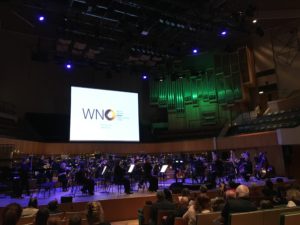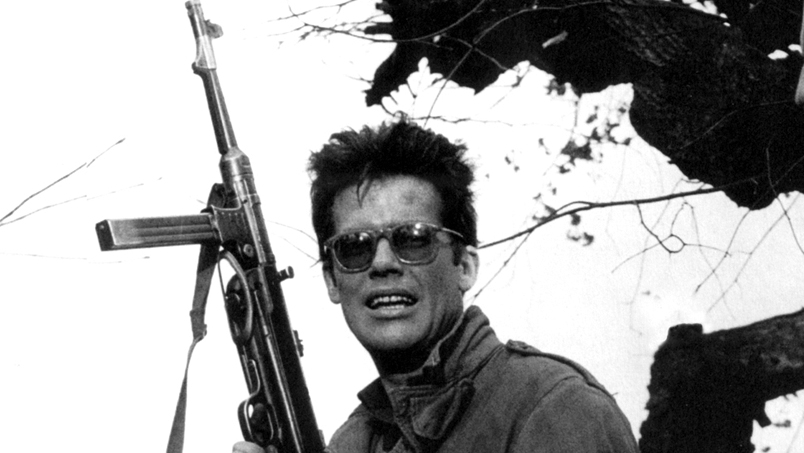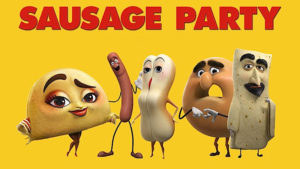
 (3 / 5)
(3 / 5)
I kicked myself for a few reasons last Sunday. The first of which, I came to discover, was not doing my research on major events in the city the same day I headed out to watch ‘Oz with Orchestra’. The event at St David’s Hall clashed with the Tour of Britain final meaning my plans for a leisurely jaunt down the A470 to enjoy some pre-show family entertainment were almost scuppered by a 1hr 50m traffic jam. We certainly weren’t in Kansas anymore.
Once I’d managed to make it through the rain and in to St David’s Hall, I was pretty much over the worst of my traffic jam rage. It was going to be fine, it was Wizard of Oz! Plus there were some jolly looking souls dressed up as Dorothy, Tin Man, Scarecrow and the Lion. My 8 year old was delighted to take part in a treasure hunt and there were other activities to keep kids entertained, though she deemed herself to be far too mature to enjoy a singalong with the WNO to the best hits from the movie. You can lead a horse to water but you can’t make them sing ‘over the rainbow’.

The other reason I kicked myself was because the event would have been a great opportunity to don some sprarkly shoes or a wee bit of festive cheek glitter. I suppose a 36 year old with a rainbow painted on her face would have been a step too far, though.
Seeing the volume of little kids and the size of the space, I wasn’t sure how well the film audio of ‘Wizard of Oz’ and a live 63 piece orchestra would work or if this could sustain the attention of very small children.

I’ve never seen any cinema classics accompanied by an orchestra but was amazed to see the orchestra pick up every cue, every dramatic effect with ease. Such was the level of intensity and emotional impact of this well-loved family classic, I was in tears in the opening bars (sucker!). The tornado scenes were simply stunning – deafening crescendos, buzzing bases and whistling brass and percussion created a beautiful musical backdrop for the cinematic mastery on screen.
This was such a lovely and fresh addition to this cinema classic and Grant Llewellyn’s direction helped ensure that there was a synergy between the musical soundtrack and the duologue on screen. The film and the music are so timeless, so sentimental and impossible to top and the orchestra was an ideal introduction for my little girl to enjoy this kid of musical performance.

I thought the WNO and venue did well to engage with families at this event and I’d take my little girl to see WNO again in a heartbeat.
Tag Archives: Cinema
Review Sausage Party by Jonathan Evans
 (3 / 5)
(3 / 5)
So you watched the trailer for Sausage Party and thought that it was anything more that an adult, animated movie telling jokes about the horrors of being the consumed then you would have probably made the safe bet. However you would have lost. Sausage Party actually has quite a bit of with and sophistication. Yes this movie with food products with mouths and large eyes that swear actually has a few things to say about different beings from different walks of life and consumerism.
We open in a supermarket where the food is sentient and awakes every morning to be taken to The Great Beyond. Whenever they’re picked up they rejoice for they will now be in the company of the gods. On one shelf one pack of sausages is next to a pack of buns and one sausage Frank (Seth Rogen) longs to joins his girlfriend bun Brenda (Kristen Wiig). It isn’t until one jar of Honey Mustard (Danny McBride) is returned where it would seem that the Great Beyond might not be so great. While they’re all in a cart on they’re way out Honey Mustard kills himself, which leads to other items falling out. So now begins their quest to get back to their shelf and also discover the true intentions of their gods.
Just like Cloudy With a Chance of Meatballs this takes its subject of food and consumer products and does just about everything it can with it. To how one type of products interact with others to having some serve and parallels for real world people. One of the reasons this is able to tell so many more jokes is its not bound by the limitations of being a children’s movie, this can address alcohol, drugs and sex and it makes use of all its resources.
It would seem that the products themselves do not require to consume. They just seem to have their existence. Perhaps they will die when they go past their expiration date? Do any of their manufacturers know that they regularly create sentient being and send them off to their deaths? Such questions are honestly superfluous.
This is not a very good looking movie. This was clearly made with a limited budget, Nearly all the food looks shiny and like plastic. Obvious really, because this is a movie with a very limited audience. Few people would want to see a movie about food swearing constantly and animated no less.
As smart as the movie is it is still overt. Really, really overt. What they have the characters talk about and have serve as their parallels are obvious and not very subtle but they are still addressing the cause and effects of their subject matter. If there’s an example to point to it would be the South Park movie (or south park in general)
Though it is by no means subtle and quite crude it is still addressing big problems in society and has fully thought-out the perspective on food products (even just consumable products). The audience for this movie will indeed be a sausage party, mostly males, but if anyone goes to this movie and gets a little more nutrition in their diet than they were expecting it will have been worth it.
Review: Ashes and Diamonds Chapter Arts Centre By James Knight

The first image we see in Andrej Wajda’s Ashes and Diamonds is that of a cross on top of a small chapel. The camera pans down to find three men laying on the grass next to the chapel, one of them is sleeping. An innocent little girl appears and asks one of the men to open the chapel door for her. A nice summery image for a pleasant summer’s day somewhere in Poland. Then in the distance a car approaches, the men rush to their feet, each brandishing machine guns and tell the little girl to get lost. Bullets fly, the car comes crashing to a halt, the driver falls out, machine gunned to death. The passenger makes a run for it, bangs on the locked door of the chapel, but he has nowhere to go. The three men machine gun him to his death, as he falls he bursts into flames at the door of the chapel. One of the three men then panics, ‘let’s get out of here,’ he wails, and we realise that we’re not watching super cool hitmen but real human beings caught up in civil unrest in Wajda’s most humanistic of films. Later, after the three men have fled we realise that they’ve killed the wrong people as their intended target arrives on the scene. A worker surveying the dead bodies then asks, ‘can you tell us how long people will have to die like this?’ Ashes and Diamonds is a film that asks the toughest of questions.
Presented as part of Martin Scorsese’s “Masters of Polish Cinema” series, the film features in Scorsese’s list for his choice for the ten greatest films ever made in the 2012 Sight & Sound poll. The film is a key component of Polish new wave cinema, one of the most stylish of national cinema movements and just like the French new wave which came hot on its heels, Wajda and his fellow filmmakers managed to expand on the cinematic foundations laid forth by the Italian neo realists in the mid 1940’s.
Ashes and Diamonds is essentially the third part in Wajda’s unofficial war trilogy, although enjoyment of the film is not dependent on viewing the previous two. In the previous two films, A Generation (1955) and Kanal (1957), which both concern themselves with the Polish uprising during the Second World War, there is, despite the bloodshed amongst the upheaval of human morality, a great deal of hope and idealism. But come Ashes and Diamonds, this hope has evaporated and instead been replaced with despair. Even in spite of the fact that the Nazis have surrendered which people hear about over a loudspeaker yet barely react to, there is no Times Square esque V-J Day celebrations here, because for the first time since the war started, people can now envisage their futures and they don’t like what they see. Fighting the Nazis united them in hope, but now the war is over and the only people left to fight is themselves.
Set over twenty four hours in 1945, the overriding narrative of the film deals with the civil conflict between the pro-Russian People’s Army and the UK backed Home Army. The film is both a war tale and a tragic love story whilst also having the feel of an American hang out movie. The star of the film, Zbigniew Cybulski, incidentally one of the three shooters we meet in the opening scene, was often known, thanks largely to this performance, as the Polish James Dean. He certainly has Dean’s coolness and playfulness, whilst his impulsiveness throughout the film conjures up the image of Dean jumping from roof tops in Elia Kazan’s East of Eden (1955). Cybulski’s performance, his actions, his facial expressions, manage to capture the melancholic nostalgia of the story and of post war Poland, he says things like, ‘nothing in this country is serious anymore.’ He meets a girl, the wonderful and beautiful Ewa Kryzewska, who works at a hotel bar who says things like, ‘I don’t want any goodbyes or memories to remember when it’s over.’ This is a film where every line of dialogue has meaning and significance.
On the surface at least, Cybulski is the star of the film, but the true star of Andrej Wajda’s Ashes and Diamonds is Andrej Wajda himself. The whole film is a one hundred minute masterclass in cinematic framing. In one scene, Wajda frames Cybulski’s collaborator in arms Andrej, played by Adam Pawlikowski, in a close-up as he talks on the phone inside a telephone booth, over his shoulder is Cybulski leaning on a bar, then behind Cybulski in walks Communist Commissioner Szczulka, played by Waclaw Zastrzezynski, the man who Cybulski and co were originally sent to kill. In one shot through expert framing Wajda manages to convey the entirety of the film’s emotions and conflicts with stark simplicity. Throughout the film Cybulski keeps coming face to face with his past, in one scene he sees the crying fiancé of one of the men he killed in the opening sequence. Cybulski stares at her and Wajda holds and holds Cybulski’s gaze in a close-up. There are no words spoken yet by dwelling on Cybulski’s face Wajda manages to convey all the actor’s emotions, it’s almost as if we can hear his thoughts. This is pure cinema.
The images in Ashes and Diamonds are so profoundly striking it is a film that could be watched and understood with the sound turned off. The film ends with an unforgettable sequence that you will carry around with you long after the final credits have rolled. It’s visual poetry from start to finish.
Ashes and Diamonds (12)
Poland/1958/104mins/subtitles/12. Dir: Andrzej Wajda. With: Zbigniew Cybulski.
At Chapter Arts Centre from June 7th – 9th.
– See more at: http://www.chapter.org/ashes-and-diamonds-12#sthash.2nExviZK.dpuf

